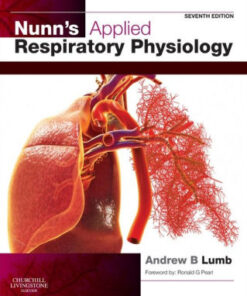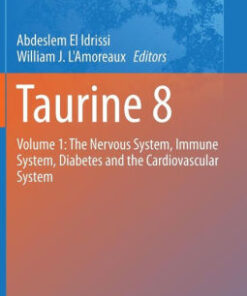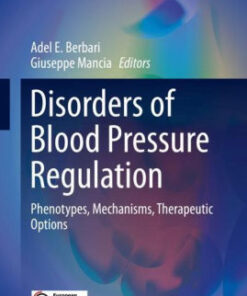(PDF) Clinical Neuroanatomy 29th Edition by Waxman
$28.00
Download instantly Clinical Neuroanatomy 29th Edition by Stephen G. Waxman. It is ebook in PDF format.
ISBN-10: 1260452352 ISBN-13: 9781260452358
Preview
This is the PDF eBook version for Clinical Neuroanatomy 29th Edition by Stephen G. Waxman
Table of Contents
Dedication
Key Features of this Edition!
Contents
Preface
SECTION I BASIC PRINCIPLES
1. Fundamentals of the Nervous System
Over-all Plan of the Nervous System
Peripheral Nervous System
Planes and Neuroanatomic Terms
2. Development and Cellular Constituents of the Nervous System
Neural Development
Neurons
Neuronal Groupings and Connections
Glia
Degeneration and Regeneration
Neurogenesis
3. Signaling in the Nervous System
Membrane Potential
Generator Potentials
Action Potentials
The Nerve Cell Membrane Contains Ion Channels
The Effects of Myelination
Conduction of Action Potentials
Synapses
Synaptic Transmission
Excitatory and Inhibitory Synaptic Actions
Synaptic Plasticity and Long-Term Potentiation
Presynaptic Inhibition
The Neuromuscular Junction and the End-Plate Potential
Neurotransmitters
SECTION II INTRODUCTION TO CLINICAL THINKING
4. The Relationship Between Neuroanatomy and Neurology
Symptoms and Signs of Neurologic Diseases
Where Is the Lesion?
What Is the Lesion?
The Role of Imaging and Laboratory Investigations
The Treatment of Patients with Neurologic Disease
SECTION III SPINAL CORD AND SPINE
5. The Spinal Cord
Development
External Anatomy of the Spinal Cord
Spinal Roots and Nerves
Internal Divisions of the Spinal Cord
Pathways in White Matter
Reflexes
Lesions in the Motor Pathways
Examples of Specific Spinal Cord Disorders
6. The Vertebral Column and Meninges Surrounding the Spinal Cord
Investing Membranes (Meninges)
Spinal Cord Circulation
The Vertebral Column
Lumbar Puncture
Imaging of the Spine and Spinal Cord
SECTION IV ANATOMY OF THE BRAIN
7. The Brain Stem and Cerebellum
Development of the Brain Stem and Cranial Nerves
Over-all Brain Stem Organization
Cranial Nerve Nuclei in the Brain Stem
Medulla
Pons
Midbrain
Vascularization
Cerebellum
8. Cranial Nerves and Associated Pathways
Origin of Cranial Nerve Fibers
Functional Components of the Cranial Nerves
Anatomic Relationships of the Cranial Nerves
9. Diencephalon: Thalamus and Hypothalamus
Thalamus
Hypothalamus
Subthalamus
Epithalamus
Circumventricular Organs
10. Cerebral Hemispheres/Telencephalon
Development
Anatomy of the Cerebral Hemispheres
Microscopic Structure of the Cortex
Physiology of Specialized Cortical Regions
Basal Ganglia
Internal Capsule
11. Ventricles and Coverings of the Brain
Ventricular System
Meninges and Submeningeal Spaces
CSF
Barriers in the Nervous System
Skull
12. Vascular Supply of the Brain
Arterial Supply of the Brain
Venous Drainage
Cerebrovascular Disorders
SECTION V FUNCTIONAL SYSTEMS
13. Control of Movement
Neural Control of Movement
Major Motor Systems
Motor Disturbances
14. Somatosensory Systems
Receptors
Connections
Somatosensory Pathways
Cortical Somatosensory Areas
Pain
15. The Visual System
The Eye
The Retina
Visual Pathways
The Visual Cortex
16. The Auditory System
Anatomy and Function
Auditory Pathways
17. The Vestibular System
Anatomy
Vestibular Pathways
Functions
18. The Reticular Formation
Anatomy
Functions
19. The Limbic System
The Limbic Lobe and Limbic System
Olfactory System
Hippocampal Formation
Functions and Disorders
Septal Area
20. The Autonomic Nervous System
Autonomic Outflow
Autonomic Innervation of the Head
Visceral Afferent Pathways
Hierarchical Organization of the Autonomic Nervous System
Transmitter Substances
21. Higher Cortical Functions
Frontal Lobe Functions
Language and Speech
Cerebral Dominance
Memory and Learning
Epilepsy
SECTION VI DIAGNOSTIC AIDS
22. Imaging of the Brain
Skull X-Ray Films
Angiography
Computed Tomography
Magnetic Resonance Imaging
Magnetic Resonance Spectroscopy
Diffusion-Weighted Imaging
Functional MRI
Positron Emission Tomography
Single Photon Emission CT
23. Electrodiagnostic Tests
Electroencephalography
Evoked Potentials
Transcranial Motor Cortical Stimulation
Electromyography
Nerve Conduction Studies
24. Cerebrospinal Fluid Examination
Indications
Contraindications
Analysis of the CSF
SECTION VII DISCUSSION OF CASES
25. Discussion of Cases
The Location of Lesions
The Nature of Lesions
Cases
Appendix A: The Neurologic Examination
Appendix B: Testing Muscle Function
Appendix C: Spinal Nerves and Plexuses
Appendix D: Questions and Answers
Index




